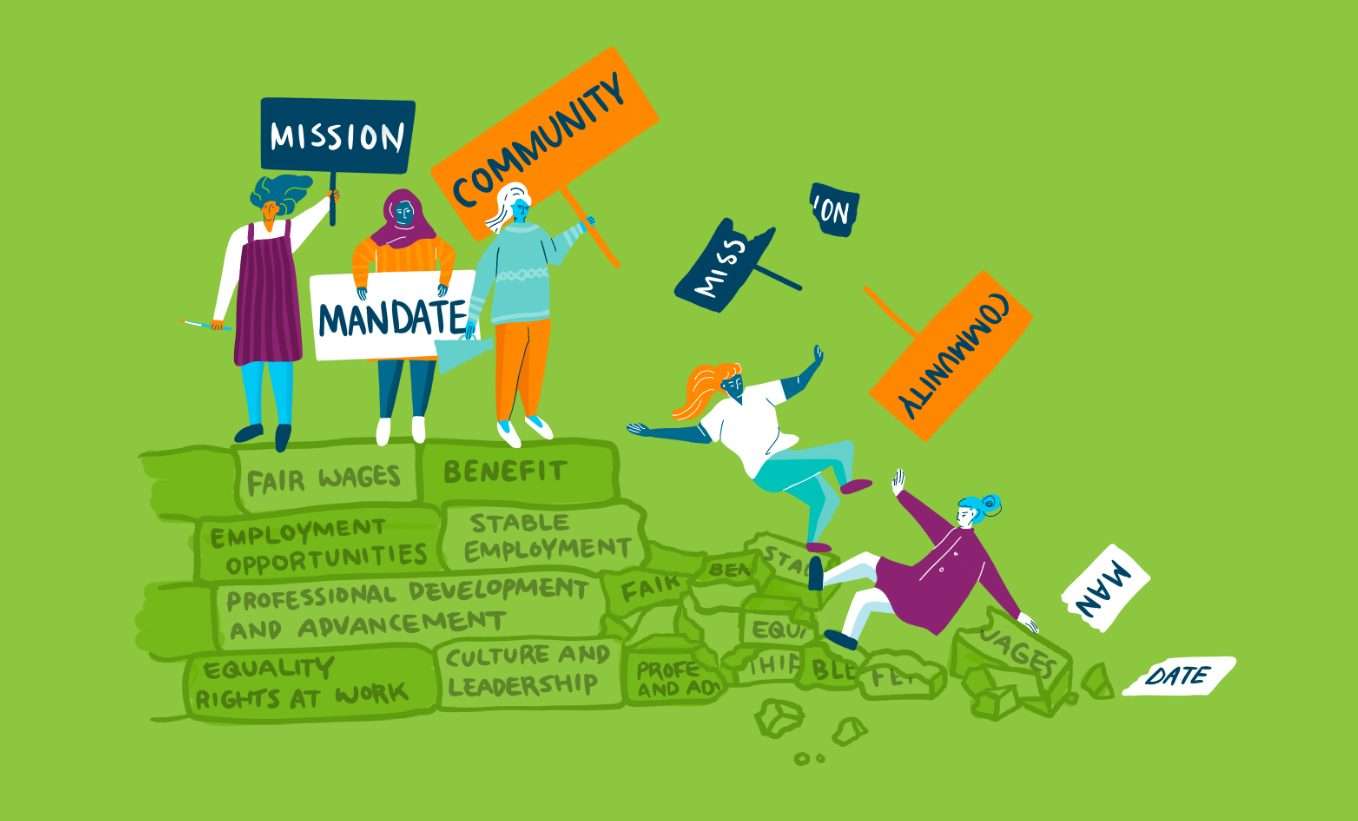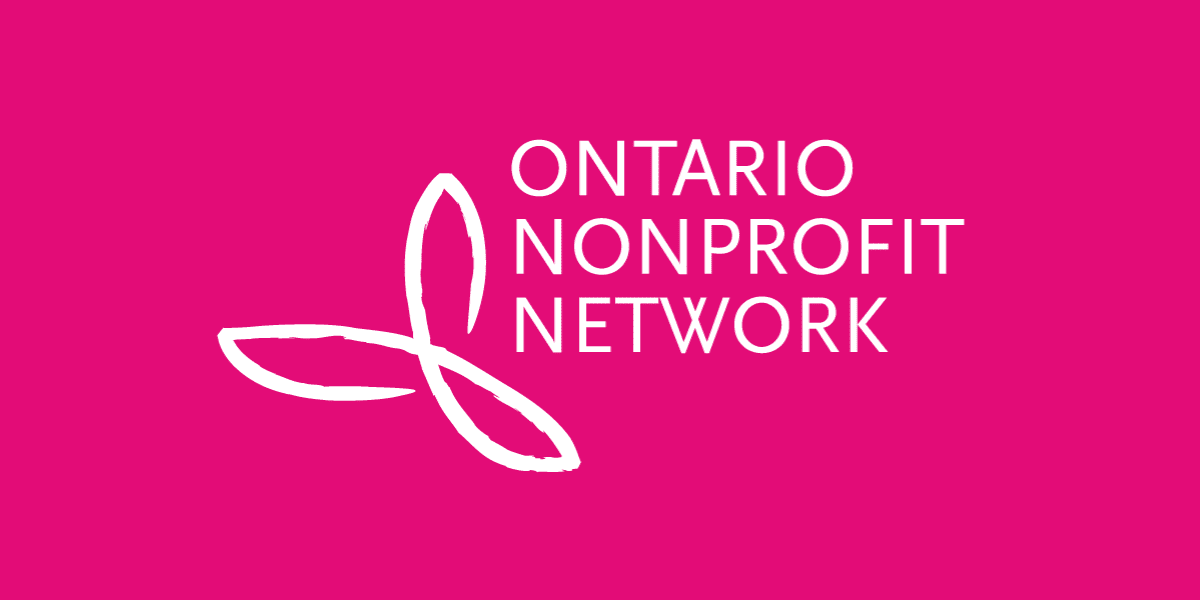Examining women’s compensation in the nonprofit sector – Part 1
The Care Penalty
By Pamela Uppal
This is the first in a three-part series of blogs examining women’s pay in the nonprofit sector. Part 2 and Part 3 are also available online.
Given the broader gender pay gap for women in the labour market, how does it manifest in the nonprofit sector? In short, what does women’s compensation in the nonprofit sector look like? Based on our literature review findings, in a three-part blog series we’ll explore different factors impacting women’s compensation in the sector.
We have a good sense of how women are faring in the public and private sectors as most of the literature dealing with women in the labour force focuses on women’s employment experiences in these two sectors. However, when it comes to women working in the nonprofit sector we have little to no information. Data on the sector as a whole is sparsely collected on a consistent basis, women’s employment experience in the sector is an underexplored area of research, and the sector is either forgotten or subsumed under the public sector (at times then referred to as the broader public sector). But unique distinctions that impact employment trends exist between the nonprofit and private and public sectors (e.g., higher unionization rates which result in higher pay).
Piecing together quantitative and qualitative information from a variety of sources in Ontario and Canada, our recent literature review reveals that women’s compensation in the sector is affected by three critical issues: the “care penalty”, a gender wage gap, and limited access to benefits such as a pension plan and maternity top-ups. While only two are about pay and one is benefits related, together these issues create a compensation picture where women earn less than men in the sector. The “care penalty’ impacts women’s earnings in carework positions from the outset and a lack of benefits sets women back economically during critical points in their life cycle. A gender pay gap exists across the sector for women as a group. You can read more in depth about this finding in Decent Work for Women: A literature review of women working in the nonprofit sector.
This is the first in a series of three blog posts (each focusing on one of these issues) that highlight the findings of our literature review.
The care penalty decreases earnings in the sector
The “care penalty” refers to low pay and a strenuous workload for those who are specifically in caregiving industries and occupations. While not all nonprofit work is carework, the sector’s overall narrative is rooted in carework. Despite the fact the workforce is highly educated and experienced, a “care penalty” is applied to the wages of those working in the nonprofit sector where workers in the sector make less than workers in other industries. For example, Tom Zizys’ 2011 report Not Working for Profit, which used 2006 Statistics Canada data to analyze sector earnings, found that women working in the nonprofit sector in the Toronto Census Metropolitan Area (CMA) earned 79% of the average wage for all Toronto CMA workers in 2005, while earning 85% of the average wage in the rest of Ontario. At the time Zizys found that 34.0% of jobs across all industries In Ontario required a post-secondary degree, compared to 73.3% for the nonprofit sector (Zizys 24). Moreover, that occupations in the nonprofit sector disproportionately require a university or college education compared to other sectors – both in the Toronto CMA and the rest of Ontario. Similarly, the 2017 Charity Village report Salary and Benefits Study found that 85% or more people working in the sector have at least some post-secondary education with a large portion holding a postgraduate degree.
So, what does this mean?
This difference in earnings between the sector and other industries stems from and perpetuates the notion that nonprofit sector work is inherently “low-skilled” and “low-valued” compared to other sectors, especially given that the nonprofit sector labour force is highly educated and experienced.
The “care penalty” is also connected to the pervasive idea that carework is women’s work, particularly racialized and immigrant women’s work, which historically and to date has been devalued (see: gender and racialized division of labour). It’s no surprise that the sector is women-majority. With this penalty, women working in the nonprofit sector by virtue of simply working in the sector start at a lower wage than women in other sectors with equal education and experience.
More broadly, ONN’s 2015 Changework report on valuing decent work in the nonprofit sector found that generally there is a need to better understand what is fair income in the sector, within subsectors, and in comparison to other industries.
Next Steps
The “care penalty” is one of three issues highlighted by our literature review.
While the literature review was able to paint an introductory picture of women’s employment experiences in the sector, particularly that of compensation, we identified major gaps in research. One critical one is the lack of information available on immigrant, Indigenous, trans, and racialized women and women with disabilities. The available data on women’s compensation in the sector are not disaggregated by any identity marker other than gender.
Multiple intersecting questions have emerged from our literature review that require further investigation:
- Currently, what are diverse men and women earning in the sector, across subsectors and roles, compared to other sectors and their roles?
- Why is there a difference in earnings between the sector and other industries?
The literature review is only the beginning of ONN’s Decent Work for Women Working in Ontario’s Nonprofit Sector project. ONN hopes to explore these questions in the engagement phase of the project by hearing from women working in the sector through learning circles, key informant interviews, and a sector-wide survey.
The nonprofit sector in Ontario and Canada is rich and vibrant. Its contributions are critical to the social, economic, and political fabric of communities. Given the sector’s contributions and that it is a women-majority sector, it’s time that those working in the sector collectively begin to think about how it can lead the way for gender equity in the workplace.
More information
-
- Our project, Decent Work for Women Working in Ontario’s Nonprofit Sector
- Subscribe to our project newsletter
- Literature review: Decent Work for Women: A literature review of women working in Ontario’s nonprofit sector
- Pamela Uppal, project lead: pamela@theonn.ca, 416 642 5648 x504





